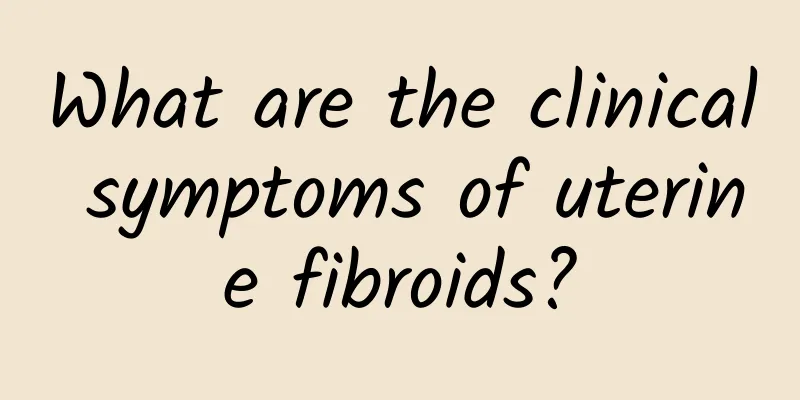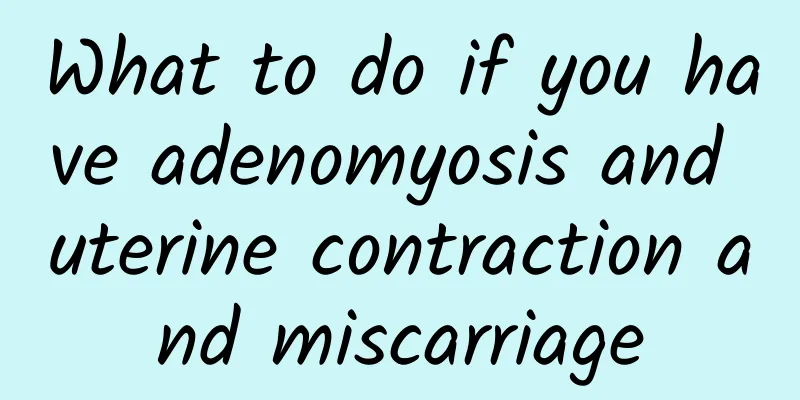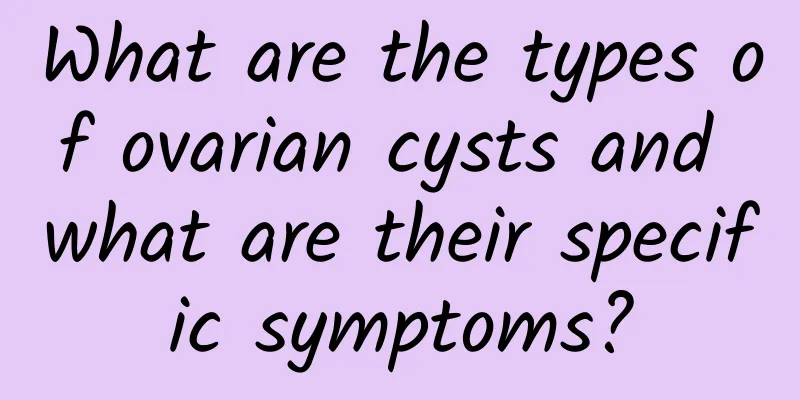What are the clinical symptoms of uterine fibroids?

|
The incidence of uterine fibroids is extremely high, which can easily cause infertility and other problems. Early detection and treatment of uterine fibroids can reduce the harm caused by uterine fibroids. So what are the clinical symptoms of uterine fibroids? Experts will introduce them. What are the clinical symptoms of uterine fibroids? Uterine fibroids usually have no obvious symptoms and are only occasionally discovered during pelvic examinations. The onset of uterine fibroid symptoms is closely related to the location, growth rate, and degeneration of the fibroids, but has little to do with the size or number of the fibroids. 1. Menstrual changes: This is the most common symptom. Large intramural fibroids increase the area of the uterine cavity and endometrium, resulting in poor uterine contractions or excessive endometrial hyperplasia, which can lead to shortened menstrual cycles, increased menstrual volume, prolonged menstrual periods, irregular vaginal bleeding, etc. Submucosal fibroids often cause menorrhagia, and as the fibroids grow larger, the menstrual period is prolonged. Subserosal fibroids and small intramural fibroids often have no obvious menstrual changes. 2. Increased leucorrhea: Intramural fibroids increase the area of the uterine cavity, increase the secretion of endometrial glands, and are accompanied by pelvic congestion, resulting in increased leucorrhea. Submucosal fibroids suspended in the vagina are susceptible to infection and necrosis on their surface, producing a large amount of purulent and bloody discharge and necrotic tissue discharge, accompanied by a foul odor. 3. Compression symptoms: Fibroids compress the bladder and cause frequent urination, urination disorders, urine retention, etc. 4. Abdominal mass: Patients often complain of abdominal distension and a mass felt in the middle of the lower abdomen. The mass is hard and irregular in shape. 5. Abdominal pain, backache, and lower abdominal distension: Patients usually have no abdominal pain, but acute abdominal pain occurs when the pedicle of the subserosal fibroid is twisted. When the fibroid turns red, the abdominal pain is severe and accompanied by fever. 6. Infertility: According to literature reports, it accounts for 25% to 40%. It may be that the fibroids compress the fallopian tubes and twist them, or deform the uterine cavity, hindering the implantation of the fertilized egg. |
<<: What's wrong with dull pain in the upper abdomen and frequent farting?
>>: What is the cause of moderate cervical erosion?
Recommend
How should women in menopause take care of themselves? The most important thing is to take care of this part
The first thing menopausal women need to do is to...
Body sculpting creates perfect body curves bit by bit (Part 2)
More body sculpting methods: Full tummy tuck This...
What are the serious consequences of pelvic peritonitis?
The appearance of pelvic peritonitis worries pati...
What medicine can eliminate uterine cysts?
Treatment of uterine cysts usually requires medic...
What are the main causes of cervical erosion?
Among gynecological diseases, cervical erosion is...
What is the risk of pregnancy after miscarriage?
After a successful abortion, both the patient and...
How to tell if you have had a miscarriage
Miscarriage is a common condition in early pregna...
Is menopause related to Alzheimer's syndrome?
There is indeed a certain correlation between men...
What are the main aspects of dietary care for ovarian cysts?
What aspects of diet should be paid attention to ...
How to Differentially Diagnose Pelvic Peritonitis
How to diagnose pelvic peritonitis? Pelvic perito...
Beware of the causes of cervicitis caused by human factors
In recent years, the incidence of cervicitis has ...
How to choose an abortion hospital
Everyone knows that painless abortion is the best...
Will polycystic ovary syndrome disappear after abortion?
Polycystic generally refers to polycystic ovary s...
Enzymes are amazing! Helps with weight loss and detoxification! Enzyme brewing has 3 major benefits
There is a way to lose weight that does not requi...
Patients with pelvic inflammatory disease can get healthy from eating
At present, pelvic inflammatory disease is a very...









